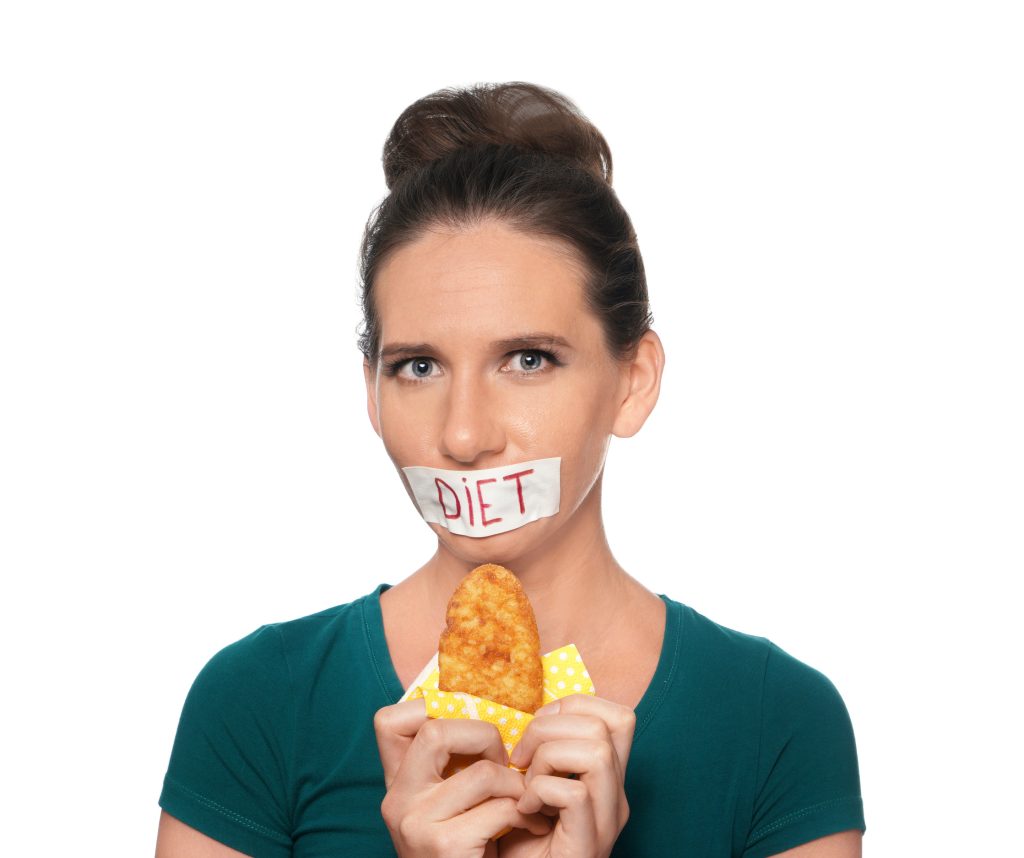
The diet that worked wonders in your twenties might suddenly feel like a losing battle in your thirties and beyond. As your metabolism changes and life gets more demanding, many popular weight-loss shortcuts can do more harm than good. These quick fixes often lead to nutrient deficiencies, muscle loss, and a frustrating cycle of yo-yo dieting. Understanding why these common diet tricks that backfire is the first step to creating a sustainable, healthy lifestyle that works with your body, not against it.
Here are nine popular diet strategies that you should reconsider after turning 30.
1. Drastically Slashing Calories
A severe calorie-restricted diet might have yielded quick results in the past, but after 30, your metabolism is more sensitive. Dramatically cutting calories can signal to your body that it’s in starvation mode, causing it to slow down your metabolic rate to conserve energy. This makes it even harder to lose weight in the long run. Furthermore, this approach can lead to significant muscle loss, and since muscle burns more calories than fat, you’re only sabotaging your long-term goals.
2. Cutting Out Entire Food Groups
Demonizing carbs or fats is a common diet trap. However, eliminating entire food groups can deprive your body of essential nutrients, fiber, and energy. Complex carbohydrates are vital for brain function and sustained energy, while healthy fats are crucial for hormone regulation—something that becomes increasingly important as you age. A balanced approach that focuses on nutrient-dense whole foods is far more effective and sustainable than restrictive fad diets.
3. Relying on “Fat-Free” Processed Foods
The “fat-free” craze of the past left a lasting, harmful legacy. When manufacturers remove fat from products like yogurt, cookies, and salad dressings, they often replace it with sugar, sodium, and artificial ingredients to make them palatable. These highly processed foods can spike your blood sugar, increase cravings, and offer little to no nutritional value. Instead, focus on incorporating healthy fats from sources like avocados, nuts, and olive oil.
4. Doing Only Cardio for Weight Loss
Spending hours on the treadmill isn’t the most effective strategy for fat loss, especially as you get older. While cardiovascular exercise is excellent for heart health, it doesn’t do much to build lean muscle mass. Starting around age 30, adults can begin to lose 3-5% of their muscle mass per decade if they’re not actively working to maintain it. Incorporating strength training is critical for boosting your metabolism, improving bone density, and creating a leaner physique.
5. Skipping Meals, Especially Breakfast
With busy schedules, it’s tempting to skip meals to save time and calories. But this often backfires by causing intense hunger and overeating later in the day. Skipping breakfast, in particular, can throw your blood sugar levels out of whack and leave you feeling sluggish. Eating regular, balanced meals helps maintain stable energy levels, control cravings, and keep your metabolism running efficiently. A protein-rich breakfast is one of the best ways to set yourself up for a successful day.
6. Following Trendy Juice Cleanses
Juice cleanses and detoxes promise rapid weight loss, but the results are almost always temporary water weight. These cleanses lack protein, healthy fats, and fiber, which are essential for feeling full and maintaining muscle. The high sugar content in many juices can lead to energy crashes and cravings. Your liver and kidneys are incredibly efficient at detoxing your body naturally; a better approach is to support them with a consistent diet of whole foods and plenty of water.
7. Ignoring the Importance of Sleep
You can have the perfect diet and exercise plan, but if you aren’t getting enough quality sleep, you will struggle to lose weight. Lack of sleep disrupts the hormones that regulate hunger—ghrelin (the hunger hormone) increases, and leptin (the satiety hormone) decreases. This hormonal imbalance leads to increased appetite and cravings for high-calorie, sugary foods. Aim for 7-9 hours of quality sleep per night to support your metabolism and overall health.
8. Overdoing High-Intensity Workouts
High-Intensity Interval Training (HIIT) is an effective workout, but doing it too frequently without adequate recovery can backfire. As you age, your body needs more time to repair and recover. Overtraining can increase cortisol, the stress hormone, which is linked to stubborn belly fat, fatigue, and injuries. Balance your intense workouts with lower-impact activities like walking, yoga, and dedicated rest days to allow your body to get stronger.
9. Using “Cheat Days” as Binges
The concept of a “cheat day” can create an unhealthy, all-or-nothing mindset. It often leads to overindulging in thousands of extra calories, which can easily undo a week’s worth of hard work and leave you feeling physically and mentally unwell. A more sustainable approach is to build occasional treats into your regular eating plan. This allows you to enjoy your favorite foods in moderation without the guilt and subsequent bingeing associated with a designated cheat day.
Rethink Your Approach to Lasting Health
The key to health and wellness after 30 is to abandon the quick-fix mentality. Your body deserves a balanced, sustainable approach that includes nutrient-dense foods, consistent strength training, adequate sleep, and stress management. By ditching the popular diet tricks that backfire, you can build a healthier relationship with food and achieve results that actually last a lifetime.
What’s one diet myth you’re glad you stopped believing?
Read more:
8 Foods That Secretly Raise Your Blood Pressure Overnight
9 “Ridiculous” Health Hacks—One Involves Your Freezer, All of Them Work
The post 9 Popular Diet Tricks That Backfire After 30 appeared first on Budget and the Bees.







